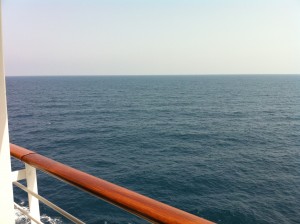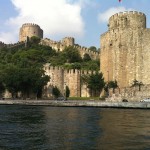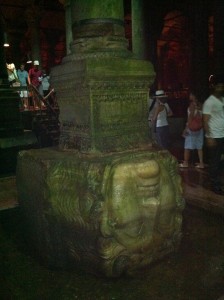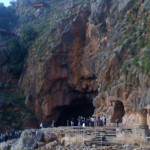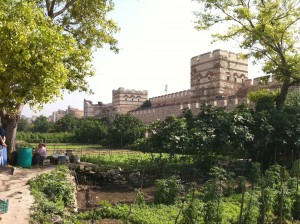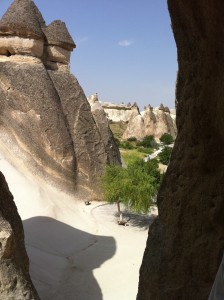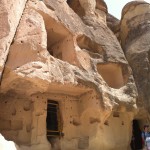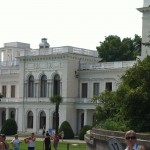
One of the cool things about a cruise is waking up in a different port every day. Each morning one goes to the window curious as to what new experience waits behind the curtains. This day, Yalta awaited, with her slumbering slopes slipping casually down to the Black Sea.
Yalta is a summer destination for Ukrainians. It was also a summer destination for Russian czars and Russian premiers.
Our first stop was Massandra Palace, Joseph Stalin’s dacha (summer home). This was a place where Uncle Joe could unwind and relieve some of the stress associated with murdering 30 million people. Mass murder has proven to be one of the fruits of political atheism; just ask Pol Pot and Mao Tse-Tung.
Next was Livadia Palace, the place where Roosevelt, Churchill and Stalin carved up post-WWII Europe. It was also the summer home of Czar Nicholas II, the last czar of Russia. Nicholas II, along with his wife, four children, domestic staff and dog, were executed by the Communists during the Bolshevik Revolution.
It has been reported that Nicholas II read his Bible regularly and even underlined his favorite Scriptures. Notwithstanding that, he made some serious errors in judgment and did not follow the counsel of his advisors that could have helped Russia avoid revolution.
It’s not enough to simply love God. The fear of the Lord is the beginning of wisdom, but it’s just the beginning. If the kingdom of God is going to fill the earth, Christians will need to be more than lovers of God, though that is a necessity; they must also be competent, compassionate, excellent and ethical in the exercise of authority.
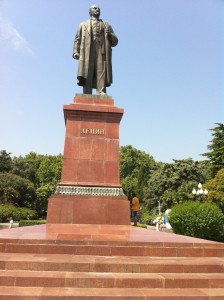
Strolling the promenade along the beach at Yalta, we saw two other sights worth noting. One was Ukrainian men sauntering along the promenade in nothing but Speedos and flip-flops. It was warm in Yalta, but it was not that warm. The other was a huge statue of Vladimir Lenin (see picture).
The two most important Vladimirs in Russian history are Vladimir I and Vladimir Lenin. Vladimir I converted to Christianity in 988 A.D. and facilitated the spread of the Gospel, helping make Russia a Christian nation. I previously blogged on Vladimir I here in the Kingdom Hero series.
Vladimir Lenin initiated the Bolshevik Revolution, which installed state-imposed atheism in Russia and the surrounding nations. The rotten fruit of the bad Vladimir is still seen throughout the former Soviet Republics.
Atheism has no virtue to offer the world. Even Greek and Roman paganism initially inspired some virtue in its followers. Atheism yields only hedonism and selfishness. What a man believes affects how he acts, and how he acts affects the world around him. Faith has consequences. GS

